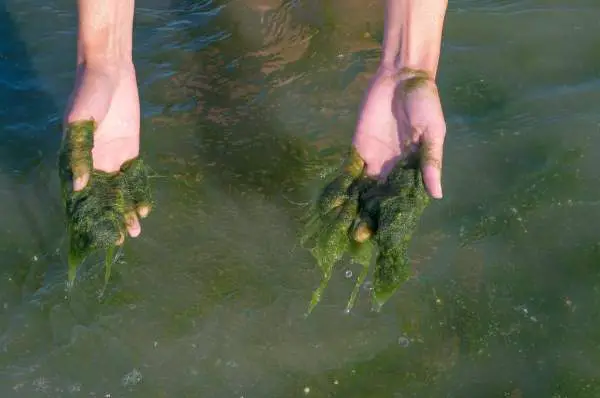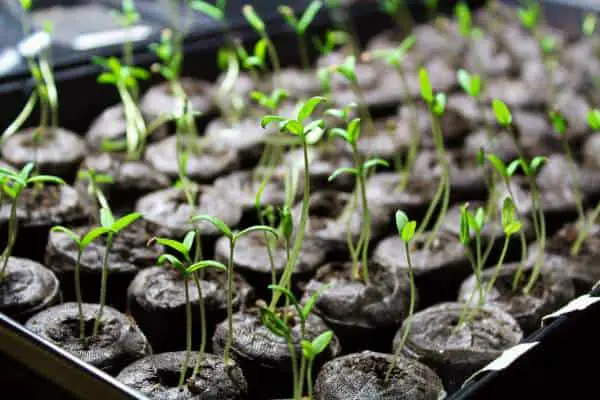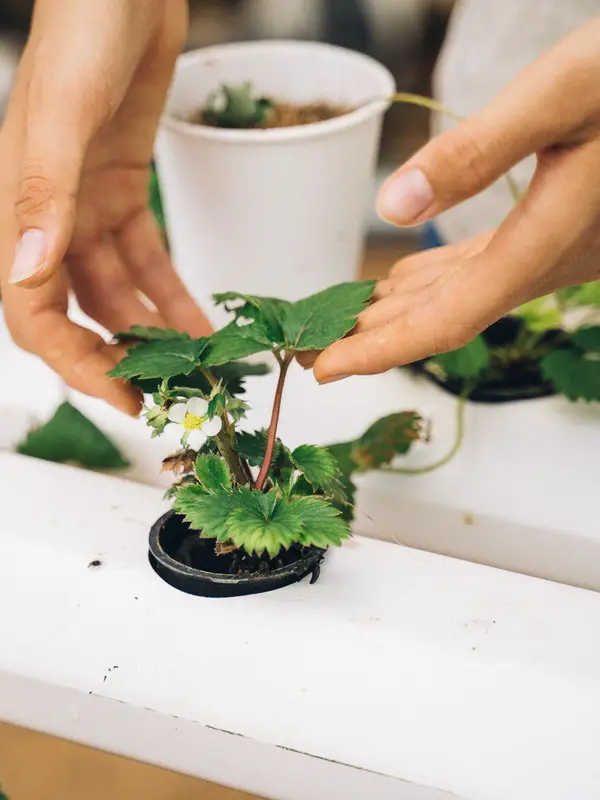Algae can cause major problems in hydroponics systems. It can build up and cling to any surface. This means there isn’t any system that can be safe from it once it gets a foothold. It sticks inside tubes, it can work its way into pumps, and it can bring a system to its knees.
Once it begins to decompose, it can bring with it a horrible odor. However, it is when you have heavy infestation things get worse. This mass of algae can form a barrier against your growing mediums.
When this begins to happen, two significant things take place. First, the precious nutrients are depleted from the system as the algae use them for their growth. Second, there is a severe drop in the dissolved oxygen in the system. This causes your plants to start suffocating and means they are weaker to fight off any other pathogens.
What Is Algae and How Does it Get Into My Hydroponics System?
Algae is a simple, plant-like aquatic organism that can grow in just about any aquatic environment. Because they are so similar to plants, they require the same basis for growth; sunlight, water, and nutrients.
Algae can be an incredibly versatile and durable organism and can take hold wherever there is a minimal amount of these three basics. It’s because of their similar needs to the plants you are trying to grow in a hydroponics system that makes them difficult to prevent and address once they’ve arrived. You can’t starve them for their needs because your plants also need the same things.
In terms of how algae ever reach your system in the first place, that is also explained by the versatility and durability of algae as an organism. While you might think that, your system is sterile, well contained, and free from potential contamination sources during the setup process, algae can, and likely will, find a way into your system.
Algae get into hydroponics systems through microscopic airborne spores. Because these spores can be so durable, it can be almost impossible to prevent them from getting into your hydroponics system. Many growers try to fathom how they get algae in their system when they have a sterile environment. The spores from algae can be carried by the wind, and it only takes one to latch onto your system. Growers themselves can even be a carrier of spores without realizing it.
Once in your system, algae find the perfect conditions for growth – assuming you’ve set up a system that’s also perfect for the plants you’re meaning to grow! This is why algae can be so problematic. They are almost impossible to keep out of your system, and once they find a home in your system, they populate incredibly rapidly.
You should expect some level of algae in your hydroponic system. Keeping your system completely algae-free is essentially impossible, and therefore, should not be the goal you’re aiming for.
By acknowledging that some amount of algae will be present, the focus of your efforts should be to prevent it from getting out of control and overtaking your system. While a healthy system can cope with small amounts of algae, as soon as the levels increase, it will be time to harvest your crops and take drastic action before starting another growing session.
By focusing your efforts on preventing algae from getting out of hand, you can help to make sure that algae growth remains at an acceptable level. Any strategy for algae problems should be with control rather than complete prevention because this can be nearly impossible to do.
How to Clean Algae Out of Your Hydroponics System
A lot of this will depend on the stage of your system, you may already have an infestation, or you are building a new system and want to prevent algae from occurring. Either way, it is better that you understand what causes algae, and how you can prevent it from taking hold.
Two things to note are that algae don’t grow on dry surfaces, and preventing as much light as possible from reaching your nutrient solution can help minimize the risk of an algae outbreak. All your channels and conduits will have covers, which prevents light from entering. Likewise, your media beds or pots can be covered to prevent light from hitting the surface.
Growers who face algae infestations may be tempted to turn to a commercially available algaecide. While these appear to be a good solution to control an algae problem, they are in fact of very little use.
An algaecide can help to control the blooms of algae, yet, if they are misused or overused, they can damage your plant’s delicate rooting systems. This is more the case if your plants are small, and have not long been planted into your system.
The worst thing with these commercial products is that once they are used, they weaken in the system, and then the algae just begin to grow again. This means you need more of the product, and you end up in a cycle that shows no end.
The first thing you’ll want to do is to assess the number of algae in the system. If it seems to be a small amount, you need to determine where this is getting into your system. It could be some light finding its way into your reservoir, or into another part of your system.
If it doesn’t become worse or affect your pump and air stones, you may be able to tackle the problem with some preventative measures until you come to the end of your growth cycle. At this stage, you can go through the following to give your system a thorough clean.
The following steps explain how to give your system a full clean. This can rid it of any traces of algae before you commence your next growing cycle.
System Cleaning and Sterilization
Because of how easy algae spores can be passed around via the air, it will be important to give your growing room a good clean as well as your system. There will be little benefit in cleaning your system to find you are up and running, and there are algae spores lurking on the walls or your lighting systems.
It will be your system, which is more important because it is this that is in direct contact with your plants. Growing medium and pots need their own cleaning, also if you are using clay pebbles, (Hydroton) be sure this doesn’t dry out and stays moist.
Step #1 Draining the System
Ridding your system of the old nutrient mix will be the first step. Some systems may not be using pumps; this would mean manually emptying your reservoir. If you have a recirculating system, then there are two ways to drain your tank.
If your tank has a drain valve, you can open this and let the water run out naturally. However, you will need a run-off area, which is lower than your tank. If you are using the pump return method. Be sure to isolate all the electrics before removing the pump from the tank.
Remove the outlet pipe, and then connect the female connector onto the pump. You can now feed the outlet hose to your desired drain point. This will remove the water via the pump rather than naturally draining.
Once you reach the lowest point before the pump begins to run dry, you will need to turn it off. This method and the other will have a couple of inches of water remaining. Manually remove this using a sponge and a bucket.
Step #2 System Cleaning
Even though you are tackling an algae problem, these steps will be the same for a system clean after each harvest. This can be one way to be sure you have eliminated any traces of algae, pathogens, or bacterial growth.
You can use two chemicals at this stage:
Food Grade Hydrogen Peroxide: This should be a 35% concentration. 3 milliliters (mls) for each gallon of water.
Unscented Bleach: The ratio of this should be 1:100. This would work out as 1.3 oz. to each gallon of water.
- Drain your system by either of the methods mentioned
- Remove pumps and air stones, these may require cleaning if algae growth reaches that far
- Remove any parts of your system which are hard to access
- Check for debris, broken roots and more algae
- With your cleaning solution of choice, use green scrubbing pads and wipe down all the areas where you see algae. Bottlebrushes can be used for hard to reach areas.
- Wipe clean and then assemble any system parts you dismantled
- Fill your system higher than usual as this covers the line where the algae was forming
- Add your sterilizing solution (bleach or hydrogen peroxide)
- Run your system for between 4 and 6 hours
- Scrubbing channels and conduits will flush this algae and debris back into your tank
- Drain your system and rinse with fresh water. Be sure to remove all the debris
- If using bleach, you need to triple flush your system
- Drain a final time and wipe down with clean towels
- You can turn on your lights as this can stop any algae starting to form and residual water
System Components
Although the algae may not be growing on your pumps or air stones, there may be traces on your growing medium and the pots. To clean all of these including pumps, the recommendation is to use hydrogen peroxide. You can though use a bleach bath to soak all of these small components. This will be a 1:1 mix, and you still need to carry out a triple rinse to remove all traces.
How to Prevent Algae from Growing in Your Hydroponics System
Algae in hydroponics systems is unavoidable to some extent. Anytime you’re working with nutrient-rich water and sunlight, you’ll have ideal growing conditions for algae. Because you can’t avoid having a nutrient-rich water solution, the best prevention method to prevent algae from growing is to cut down on light exposure.
Reducing your reservoir’s exposure to light as much as possible can be easier said than done. But here are a few things you can do:
- Use Opaque or Solid Colored Materials
One way to cut down on the potential light exposure is to use opaque and solid colored materials wherever possible. This will help prevent any light from penetrating into these parts of the system, thus reducing the potential for algae to photosynthesize and grow.
- Cover All Exposed Water
This step is similar to the previous step in that it’s predicated on prevented algae from ever getting started in the first place. Again, if algae can’t receive light to photosynthesize, it can’t grow and populate within your reservoir.
There are a number of ways to cover your water, all of which depend on how your system is set up. For smaller rigs, it might be as simple as using a solid colored material to build your plant supports into. In larger systems, you may need to fashion a sort of tarp or plastic cover with holes cut out for your plants to grow through, but that covers all other areas.
Alternative Options for Preventing Algae in Hydroponic Systems
While the most effective way to prevent algae in hydroponic systems is to cut off any potential light sources, there are a few alternative measures that growers can take. These options vary in their effectiveness but can have good results when applied properly.
- UVC Light
One method for this is to install a UVC light in your water filtration system. This light will help to kill and eliminate potential microorganisms, algae included, that could have found their way into your system. This can be costly, and they will need to be powered as long as your system is running. However, if you have serious problems with algae, a UVC light can be a good solution.
- Grapefruit Seed Extract
Some studies have found that grapefruit seed extract in the correct dosages can be an effective measure for killing and preventing algae growth. Grapefruit seed extract is a powerful anti-parasitical, anti-bacterial and anti-fungal compound. When used in low doses, it has been proven to very very effective in hydroponic systems while not being toxic to plants. The dosage recommendations will be around 5 to 10 drops per gallon of water in your system. This can be sufficient to prevent algae growing.
- Barley Straw Rafts
This solution should only be considered if growing on a large scale in a larger rig but has also shown effectiveness in fighting algae. Studies have found that the aerobic decomposition of barley straw release a chemical solution which inhibits the growth of algae. Again, this is a slower process, and isn’t ideal for smaller growers. You do need to be sure there is lots of dissolved oxygen in your water so only aerobic decomposition takes place. You can now purchase liquid barley straw extracts for use in the prevention of algae, but you do need to pay close attention to the amount of dead algae as this can reduce the amount of dissolved oxygen.
No matter which method you use to clean and control the growth of algae in your hydroponic system, there is nothing better for prevention than limiting light exposure onto your nutrient mixture.
Algae and pH Fluctuations in Hydroponics
One area not mentioned is how the growth of algae can have a severe impact on your pH levels. While methods such as the ebb and flow systems are more prone to algae growth, there isn’t one system that will be free from it forming.
Algae is resilient and as soon as the conditions are almost ideal, it will get a foothold and can lead to issues. In this case, pH fluctuations. Algae uses carbon dioxide in the same way as plants, coupled with nutrients and light help produce photosynthesis during daylight hours. As this period nears its end, the pH will usually be at its peak.
During night hours, the opposite happens. It is here the algae consume dissolved oxygen from the water to release carbon dioxide. This itself is released back into the water via respiration. The problem here is this carbon dioxide will create carbonic acid, and as such, it causes a drop in pH levels.
These swings do nothing but cause more problems as they progress. Plants can end up suffering from the nutrient lockout, or they can slowly drown through a lack of oxygen in the water.
Conclusion
Because there is no way you can eliminate the chances of algae from forming, it is better to expect its presence and take precautions to limit its exposure. By following all the above, you stand the best chance of being algae-free, and having a system, which performs at, its best.
Prevention is the best medicine because if nothing else, it will save hours of cleaning to eliminate the same problem repeatedly.





